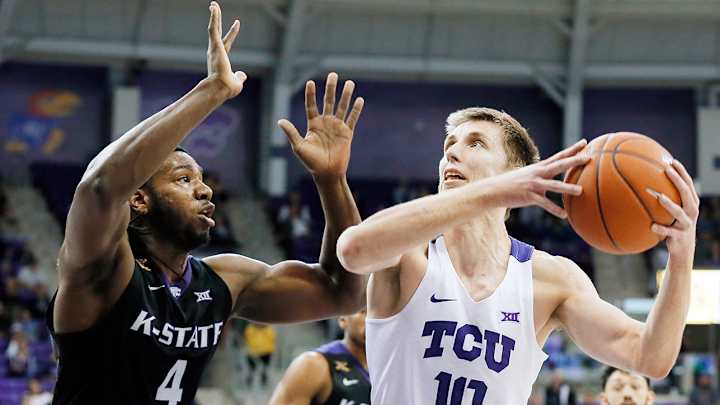Can TCU become a consistent winner in 2017-18?

The college basketball off-season is long and largely lacking in major news developments. Programs are still finalizing their 2017 recruiting classes and sorting out which of their players will return for another season or jump to the professional ranks. We’ve got a long way to go until Midnight Madness. To help pass the time, SI.com is asking and answering three key questions about each of the teams in our Way-Too-Early Top 25. Here’s No. 24, TCU.
1) Can the Horned Frogs capitalize on a few big moments in 2016-17 and turn that into consistent winning in 2017-18?
TCU ended the 2016-17 season as NIT champions after dismantling Georgia Tech, 88-56, in the finals. As a No. 4 seed in the second-tier postseason tournament, the Horned Frogs were by no means a favorite, but coming off a strong Big 12 tournament run, what they did this spring isn’t quite so surprising. Coach Jamie Dixon’s team made it to the semifinals of its league tourney after knocking out No. 1 Kansas, 85-82, on March 9. It was a signature win for a team that went just 6-12 in conference play, and it should be the first of many.
Under Dixon, who took the job at his alma mater a year ago, TCU could rise to the top of the Big 12, but in order to do that, it’ll have to take strong performances against the likes of Kansas and Baylor and turn them into more consistent play. (TCU went a disappointing 4-12 against top-100 RPI opponents over the entire season.) Good hires and big wins on national television earn teams a spot on way-too-early top 25 rankings; steady play in December, January and February ensure they keep those rankings heading into March.
Can Xavier ride its NCAA tournament momentum to future success?
(2) Could Vladimir Brodziansky become one of the better players in the Big 12?
Last season the 6’11”, 220-pound forward led the Horned Frogs in points per game (14.1) and was second in rebounds per game (5.7). He shot 56.4% from the field, the best mark of any TCU player who averaged more than 15 minutes a game, and he started every contest. That marked a big jump for a player who’d only started on occasion the year before; in fact, Brodziansky improved in every offensive category between his sophomore and junior seasons.
Then came the NIT, when he averaged 16.0 points on 57.4% shooting from the field. He was the unquestionable star of the Horned Frogs’ run, but in order for TCU get a foothold among the Big 12’s best next season, he’ll have to be more consistent—especially against tough opponents. Brodziansky shot just 25% from the field in games against Baylor and Kansas this season, and he too often allowed his shooting to go cold in big moments. If he’s to carry his team in 2017-18, that can’t be the case.
Sherri Coale hopes to get Oklahoma back to the top of the Big 12 with a new recruiting strategy
(3) Will the Horned Frogs’ offense be able to improve its shooting and gain some consistency?
As a team last season, TCU shot just 46.6% (67th among D-I programs) from the field, and only 35.4% from three-point range (153rd). That said, the Horned Frogs ranked third in the country in assists, with 661 on the season, and 16th in rebounds, with 1,404. Those numbers hardly speak to a consistent offense, which TCU will need to develop to compete with the likes of Kansas at the top of the Big 12. The Horned Frogs simply must shoot better to make the NCAAs after falling short last season.
